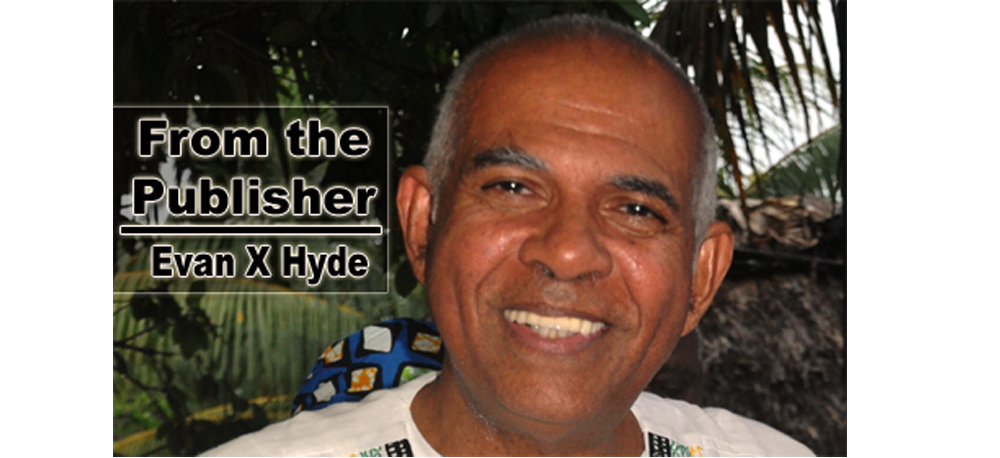Although crack cocaine began circulating in Belize City around 1985/86, followed by the beginning of gang violence, as it is termed, around 1988/89, the first sensational gang-related, cocaine-related murder took place here when Derek “Itza” Brown was assassinated at the old National Stadium horse track in early 1992. Brown lived in Majestic Alley, his base of operations, so both his residence and the site of his murder would be described as “Northside.”
But, as the years went by and the violence kept on increasing, it became clear, if you used simple arithmetic, that an increasing majority of gang-related murders were occurring on the Southside of the old capital. When we at this newspaper began pointing this out, there were people who resented the Southside’s being singled out for this kind of attention. We are Southside people at this newspaper, so our intention was not to denigrate our home base, but to apply an analytical model.
Whatever. They say in real estate that the most important factors determining real estate value are “location, location, location …” Why is this so? Yes, a certain location may have a special and spectacular view; another location may have different attributes. But, I suggest to you, location is as important as it is because rich people don’t want to live amongst or near to poor people. Straight like that.
And so, in the 1960s a major move began of Southside families who were becoming financially successful, to the Northside—King’s Park, in the first instance, or perhaps some would argue “Cinderella Town.”
King’s Park was first known as “Hone Park,” and when the ruling People’s United Party (PUP) began surveying the area and opening it up to housing development in the late 1950s/early 1960s, it was said by some that PUP Leader, Rt. Hon. George Price, practised something called “social engineering,” in that he had house lots assigned in a formula which placed poor people next to rich people. I can’t discuss this in any kind of definitive manner. I don’t know enough. I’m just saying.
The main thing is that the money began moving, faster and faster, out of the Southside into the Northside. The wealthiest native in British Honduras, Isaiah Morter, lived in the Northside where the present Princess Margaret Drive meets Barracks Road, in front of where the old fish market was located. It was said that from the heights of his home, Sir Morter, who died in 1923, could actually see Caye Chapel, which he owned at the time.
There were poor areas of Northside back then, such as the areas now known as Majestic Alley, Lightburn Alley, and so on, but the wealthiest people lived on the Northside, around Memorial Park, and this is the reason, the so-called Fort George, with a tiny population, was declared a political constituency back then in the 1950s, and why there is this present controversy about so-called “re-districting,” because voters in small constituencies are much more powerful, all things being equal, than those who are registered in giant constituencies.
Now, let me return to the rich and poor thing. There is a saying in America that in the Southern states of the U.S., the white man will tell the black man, ‘you can get as close as you want, but don’t get too big’. Whereas, in the North, the white man tells the black man, ‘you can get as big as you want, but don’t get too close’.
The main problem with rich Belizeans abandoning their ancestral homes in poor areas is that these poor areas became more and more depressed and desperate. It is for this reason that for more than three decades all these government social programs, organized by both PUP and UDP administrations, have not succeeded. As long as the money keeps running out of the Southside, there will be violence. People are fighting to eat. There are no jobs, hence the Southside youth live lives characterized by crime and violence.
What the Chinese have achieved is really amazing, because many build their homes and live on the Southside, where they have accumulated wealth. But they do not contribute to social programs amongst the Southside poor. Many Indians also run businesses in the Southside, where they have also done very well financially for themselves, but they live on the Northside, unlike the Chinese. This is my impression.
The point of the essay is that, where the traditional residents of the Southside are concerned, program has followed program, and nothing really works. Complicating the situation now is the fact that the predator Lord Ashcroft has gained control of the most important economic asset on the Southside – our port, and he has been pushing plans to establish massive cruise tourism on the Southside. The elected area representative, who is a member of the PUP Cabinet, has supported Lord Ashcroft, as has the Leader of the UDP Opposition. So, to put it succinctly, this plot has been thickening.
The war that has now broken out amongst three financial giants for cruise tourism control in the sea in front of the Southside and stretching from Belize east and south, is not going to benefit the residents of the Southside. Nothing has benefited us for more than thirty years. Our ancestors were brought here from Africa to cut down trees. There are no more trees. Still, spectacular possibilities have recently emerged here, but these possibilities are only, you guessed it, for rich people.
And rich people do not like to mingle with poor people. That’s what I said in the beginning, and that’s what I’ll say now in closing.
Power to the people.

